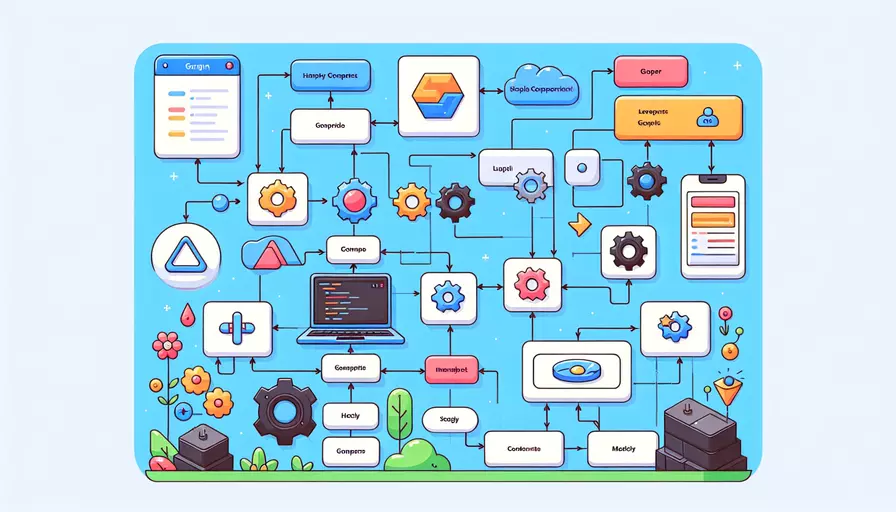
Vue组件运行的核心步骤有:1、创建Vue实例;2、定义组件;3、注册组件;4、使用组件。这些步骤相互配合,使得Vue组件能够正常运行。下面将详细描述每个步骤的具体操作和注意事项。
一、创建Vue实例
创建Vue实例是运行Vue组件的第一步。Vue实例是Vue应用的核心,它负责管理数据和DOM的映射。以下是创建Vue实例的基本步骤:
-
引入Vue库:
<script src="https://cdn.jsdelivr.net/npm/vue@2.6.14"></script> -
创建一个Vue实例:
new Vue({el: '#app',
data: {
message: 'Hello Vue!'
}
});
-
在HTML中添加挂载点:
<div id="app">{{ message }}
</div>
通过以上步骤,我们成功创建了一个最基本的Vue实例。这个实例将管理#app元素及其内部的所有内容。
二、定义组件
定义组件是运行Vue组件的第二步。组件是Vue中最重要的功能之一,它们帮助我们将代码分割成小的、可复用的模块。以下是定义组件的基本步骤:
-
使用Vue.component方法定义全局组件:
Vue.component('my-component', {template: '<div>A custom component!</div>'
});
-
在Vue实例中定义局部组件:
new Vue({el: '#app',
components: {
'my-component': {
template: '<div>A custom component!</div>'
}
}
});
定义组件后,我们可以在Vue实例的模板中使用这些组件。
三、注册组件
注册组件是运行Vue组件的第三步。注册组件有两种方式:全局注册和局部注册。以下是注册组件的基本步骤:
-
全局注册:
Vue.component('my-component', {template: '<div>A custom component!</div>'
});
-
局部注册:
new Vue({el: '#app',
components: {
'my-component': {
template: '<div>A custom component!</div>'
}
}
});
注册组件后,我们可以在Vue实例或其他组件中使用这些组件。
四、使用组件
使用组件是运行Vue组件的第四步。使用组件非常简单,只需要在模板中引用已注册的组件即可。以下是使用组件的基本步骤:
-
在HTML模板中使用组件:
<div id="app"><my-component></my-component>
</div>
-
组件的嵌套使用:
Vue.component('child-component', {template: '<div>Child component</div>'
});
Vue.component('parent-component', {
template: '<div>Parent component<child-component></child-component></div>'
});
-
在HTML模板中使用嵌套组件:
<div id="app"><parent-component></parent-component>
</div>
通过以上步骤,我们成功地实现了组件的定义、注册和使用,使得Vue组件能够正常运行。
五、组件的数据传递和事件
在Vue组件中,数据传递和事件处理是非常重要的内容,它们使得组件之间能够有效地进行通信。以下是组件数据传递和事件处理的基本步骤:
-
父组件向子组件传递数据(Props):
Vue.component('child-component', {props: ['message'],
template: '<div>{{ message }}</div>'
});
new Vue({
el: '#app',
data: {
parentMessage: 'Hello from Parent'
},
template: '<child-component :message="parentMessage"></child-component>'
});
-
子组件向父组件传递事件(Event):
Vue.component('child-component', {template: '<button @click="notifyParent">Notify Parent</button>',
methods: {
notifyParent() {
this.$emit('notify');
}
}
});
new Vue({
el: '#app',
methods: {
handleNotify() {
alert('Received notify event from child component');
}
},
template: '<child-component @notify="handleNotify"></child-component>'
});
通过以上步骤,我们可以实现父子组件之间的数据传递和事件处理,使得组件之间的通信更加顺畅。
六、组件的生命周期钩子
组件的生命周期钩子是运行Vue组件的一个重要方面,它们在组件实例的不同阶段被调用。以下是组件生命周期钩子的基本步骤:
-
常用的生命周期钩子:
created: 实例创建完成后调用mounted: 实例挂载完成后调用updated: 数据更新后调用destroyed: 实例销毁后调用
-
使用生命周期钩子:
Vue.component('my-component', {template: '<div>A custom component!</div>',
created() {
console.log('Component created');
},
mounted() {
console.log('Component mounted');
},
updated() {
console.log('Component updated');
},
destroyed() {
console.log('Component destroyed');
}
});
new Vue({
el: '#app',
template: '<my-component></my-component>'
});
通过以上步骤,我们可以在组件的不同生命周期阶段执行相应的操作,从而更好地控制组件的行为。
七、总结和建议
综上所述,运行Vue组件的核心步骤包括创建Vue实例、定义组件、注册组件和使用组件。通过这些步骤,我们可以实现组件的定义、注册和使用,并通过数据传递和事件处理实现组件之间的通信。此外,组件的生命周期钩子使得我们可以在组件的不同阶段执行相应的操作。
进一步的建议包括:
- 熟练掌握Vue的基本概念和语法,以便更好地理解和使用组件。
- 多练习组件的定义和使用,通过实际项目积累经验。
- 关注Vue的官方文档和社区资源,及时了解最新的功能和最佳实践。
- 优化组件的性能,确保应用的高效运行。
通过不断学习和实践,我们可以更好地掌握Vue组件的运行机制,从而开发出更高质量的Vue应用。
相关问答FAQs:
1. Vue组件的运行方式是什么?
Vue组件的运行方式是通过Vue实例来使用和渲染组件。首先,需要在Vue实例中注册组件,然后通过组件的标签或组件的名称在模板中引用组件。当Vue实例渲染模板时,会自动将组件渲染到相应的位置。
2. 如何在Vue实例中注册和使用组件?
在Vue实例中注册组件有两种方式:全局注册和局部注册。全局注册的组件可以在任何Vue实例中使用,而局部注册的组件只能在其所属的Vue实例中使用。
- 全局注册:通过Vue.component()方法全局注册组件。在Vue实例之前调用该方法,将组件的名称和组件选项传递给该方法,就可以全局使用组件了。
Vue.component('my-component', {
// 组件选项
})
- 局部注册:在Vue实例的components选项中注册组件。在Vue实例的components对象中,将组件的名称和组件选项作为键值对进行注册。
new Vue({
components: {
'my-component': {
// 组件选项
}
}
})
3. 如何在模板中使用组件?
在模板中使用组件非常简单,只需使用组件的标签或组件的名称即可。如果是全局注册的组件,直接使用组件的标签即可;如果是局部注册的组件,需要使用组件的名称,并将其放在Vue实例的模板中。
<!-- 全局注册的组件 -->
<my-component></my-component>
<!-- 局部注册的组件 -->
<template>
<div>
<my-component></my-component>
</div>
</template>
需要注意的是,组件的标签或名称需要与注册时的名称保持一致。这样,当Vue实例渲染模板时,会自动将组件渲染到相应的位置。
文章标题:vue组件如何运行,发布者:worktile,转载请注明出处:https://worktile.com/kb/p/3666672

 微信扫一扫
微信扫一扫  支付宝扫一扫
支付宝扫一扫 